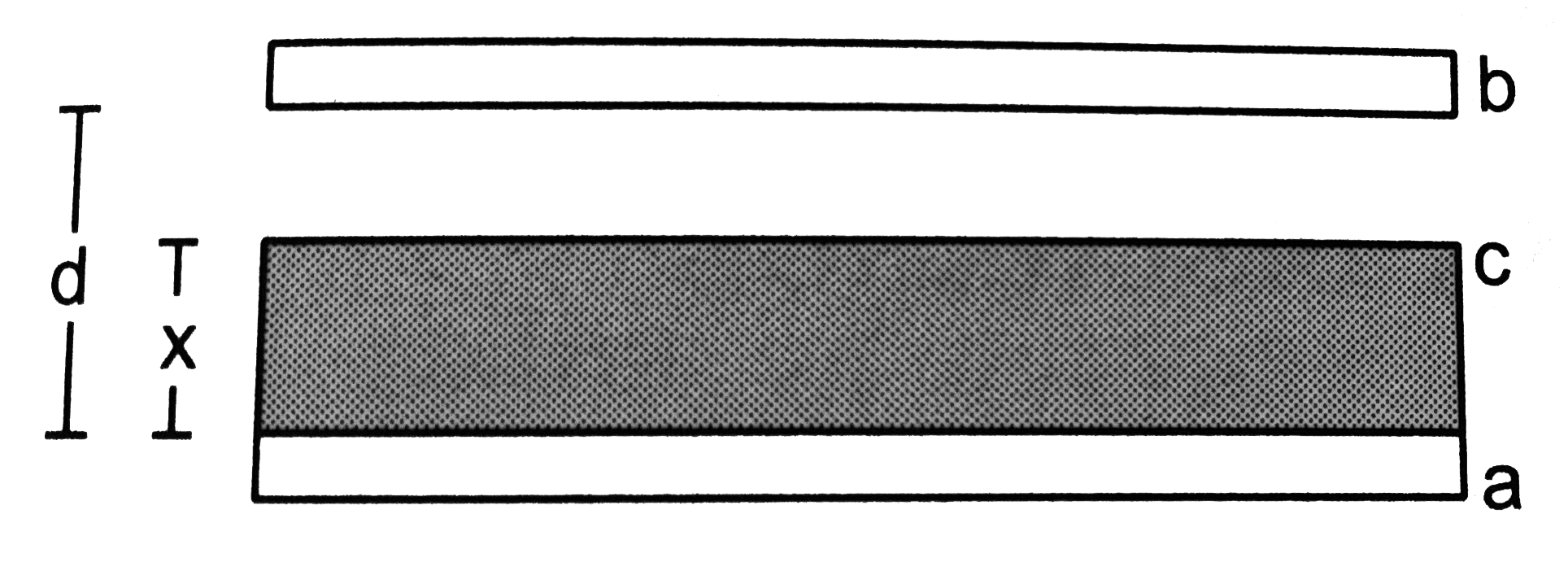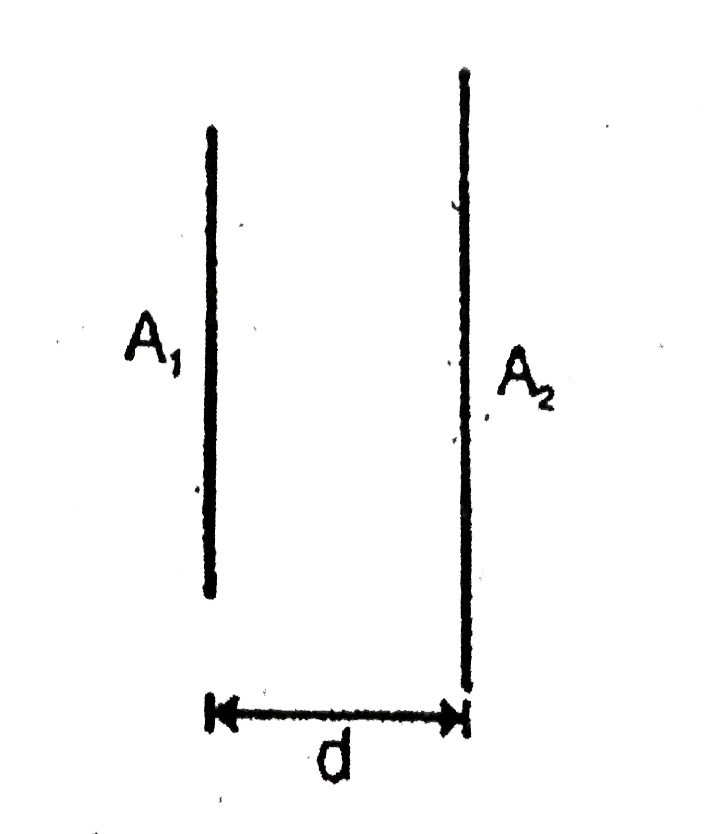Two parallel plate vacuum capacitors have areas A1 and A2 and equal plate spacing d. Show that when the capacitors are connected in parallel, the equivalent capacitance is the same as for a single capacitor with plate area A1+A2 and spacing d.
To solve the problem, we need to derive the equivalent capacitance of two parallel plate capacitors with areas A1 and A2 and equal plate spacing d when they are connected in parallel.
1. Understand the Capacitance Formula:
The capacitance C of a parallel plate capacitor in a vacuum is given by the formula:
C=ϵ0Ad
where ϵ0 is the permittivity of free space, A is the area of the plates, and d is the separation between the plates.
2. Calculate the Capacitance of Each Capacitor:
For the first capacitor with area A1:
C1=ϵ0A1d
For the second capacitor with area A2:
C2=ϵ0A2d
3. Determine the Equivalent Capacitance in Parallel:
When capacitors are connected in parallel, the total or equivalent capacitance Ceq is the sum of the individual capacitances:
Ceq=C1+C2
4. Substitute the Values of C1 and C2:
Substitute the expressions for C1 and C2 into the equation for Ceq:
Ceq=ϵ0A1d+ϵ0A2d
5. Factor Out Common Terms:
Factor out ϵ0d:
Ceq=ϵ0d(A1+A2)
6. Interpret the Result:
The expression Ceq=ϵ0(A1+A2)d shows that the equivalent capacitance is the same as that of a single capacitor with area A1+A2 and the same plate spacing d.
Conclusion:
Thus, we have shown that when the two capacitors are connected in parallel, the equivalent capacitance is the same as for a single capacitor with plate area A1+A2 and spacing d.
The capacitance C of a parallel plate capacitor in a vacuum is given by the formula:
C=ϵ0Ad
where ϵ0 is the permittivity of free space, A is the area of the plates, and d is the separation between the plates.
For the first capacitor with area A1:
C1=ϵ0A1d
For the second capacitor with area A2:
C2=ϵ0A2d
When capacitors are connected in parallel, the total or equivalent capacitance Ceq is the sum of the individual capacitances:
Ceq=C1+C2
Substitute the expressions for C1 and C2 into the equation for Ceq:
Ceq=ϵ0A1d+ϵ0A2d
Factor out ϵ0d:
Ceq=ϵ0d(A1+A2)
The expression Ceq=ϵ0(A1+A2)d shows that the equivalent capacitance is the same as that of a single capacitor with area A1+A2 and the same plate spacing d.
Thus, we have shown that when the two capacitors are connected in parallel, the equivalent capacitance is the same as for a single capacitor with plate area A1+A2 and spacing d.
Topper's Solved these Questions
- CAPACITORSBOOK - DC PANDEY ENGLISHCHAPTER - CAPACITORSEXERCISE - Exercise
155 Videos
- CAPACITORSBOOK - DC PANDEY ENGLISHCHAPTER - CAPACITORSEXERCISE - OBJECTIVE_TYPE
1 Videos
- ATOMSBOOK - DC PANDEY ENGLISHCHAPTER - ATOMSEXERCISE - MEDICAL ENTRANCES GALLERY
42 Videos
- COMMUNICATION SYSTEMBOOK - DC PANDEY ENGLISHCHAPTER - COMMUNICATION SYSTEMEXERCISE - Subjective
11 Videos
Similar Questions
Knowledge Check
A parallel plate capacitor is made by stacking n equally spaced plates connected alternatively. If the capacitance between any two adjacent plates is 'C' then the resultant capacitance is
AnCBCnC(n+1)CD(n−1)C
The capacitance of capacitor of plate areas A1 and A2 (A1<A2 at a distance d is

View SolutionTo reduce the capacitance of parallel plate capacitor, the space between the plate is
View SolutionA parallel plate capacitor is made by stacking n equally spaced plates connected alternatively. If the capacitance between any two adjacent plates is 'C' then the resultant capacitance is
View SolutionA parallel plate capacitor has plate area A and plate separation d. The space betwwen the plates is filled up to a thickness x (ltd) with a dielectric constant K. Calculate the capacitance of the system.

View Solution(b) Obtain the expression for the capacitance of a parallel plate capacitor.
View SolutionThe plates of a parallel plate capacitance 1.0 F are separated by a distance d =1 cm. Find the plate area .
View SolutionIf the plates of a parallel plate capacitor are not equal in area, then
View Solution

